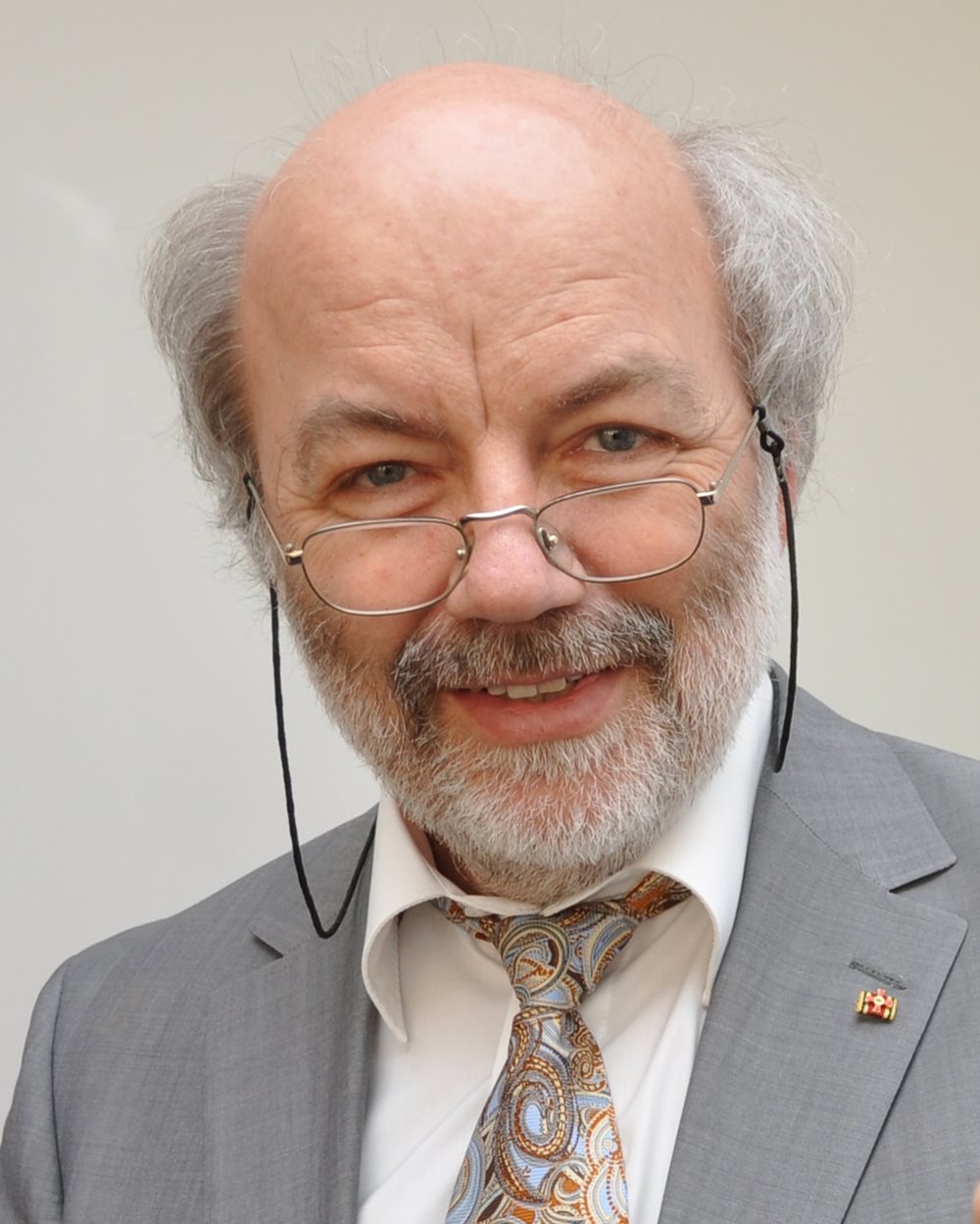INVITED SPEAKERS
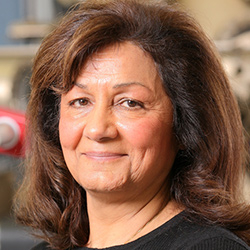
Plenary Speaker| Prof. Manijeh Razeghi,
Director, Center for Quantum Devices, Department of Electrical and Computer Engineering, Northwestern University, USA.
She received the Doctorate d’état ES Sciences Physiques from the Université de Paris, France, in 1980. Manijeh Razeghi was the Head of the Exploratory Materials Laboratory at Thomson-CSF (France) during the 80’s where she developed and implemented modern metalorganic chemical vapor deposition (MOCVD) vapor phase epitaxy (VPE), molecular beam epitaxy (MBE), GasMBE, and MOMBE for entire compositional ranges of III-V compound semiconductors from deep UV to THZ.She has authored or co-authored more than 1000 papers, more than 34 book chapters, and 20 books, including the textbooks Technology of Quantum Devices (Springer Science Business Media, Inc., New York, NY U.S.A. 2010) and Fundamentals of Solid State Engineering, 4th Edition (Springer Science Business Media, Inc., New York, NY U.S.A. 2018). Two of her books, MOCVD Challenge Vol. 1 (IOP Publishing Ltd., Bristol, U.K., 1989) and MOCVD Challenge Vol. 2 (IOP Publishing Ltd., Bristol, U.K., 1995), discuss some of her pioneering work in InP-GaInAsP and GaAs-GaInAsP based systems. The MOCVD Challenge, 2nd Edition (Taylor & Francis/CRC Press, 2010) represents the combined updated version of Volumes 1 and 2. She holds more than 60 U.S. patents and has given more than 1000 invited and plenary talks. Her current research interest is in nanoscale optoelectronic quantum devices. Dr. Razeghi is a Fellow of MRS, IOP, IEEE, APS, SPIE, OSA, Fellow and Life Member of Society of Women Engineers (SWE), Fellow of the International Engineering Consortium (IEC). She received the IBM Europe Science and Technology Prize in 1987, the Achievement Award from the SWE in 1995, the R.F. Bun shah Award in 2004, IBM Faculty Award 2013, the Jan Czochralski Gold Medal in 2016, the 2018 Benjamin Franklin Medal in Electrical Engineering, and many best paper awards. She is an elected life-Fellow of SWE, IEEE, and MRS.
Title of talk: UV Quantum Semiconductor materials and devices; for virus/Bacteria detection and disinfection.
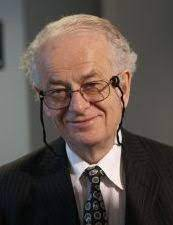
Plenary Speaker| Prof. Federico Capasso Robert,
Wallace Professor of Applied Physics
Vinton Hayes Senior Research Fellow in Electrical Engineering, Harvard University, USA
Federico Capasso is the Robert Wallace Professor of Applied Physics at Harvard University, which he joined in 2003 after 27 years at Bell Labs where his career advanced from postdoctoral fellow to Vice President for Physical Research. He has made contributions to optics and photonics, nanoscience, materials science, including the bandgap engineering technique leading to his invention of the quantum cascade laser, research on metasurfaces including the generalized laws of refraction and reflection, “flat optics” such as high-performance metalenses, and quantum electrodynamics including the first measurement of the repulsive Casimir force. He is a board member of Metalenz (https://www.metalenz.com/), which he co-founded in 2016 and is focused on bringing to market metalenses and cameras for high volume markets.
Web of Science Highly Cited Researcher: 2017,2018, 2019,2020, 2021
Ranked #1 in the field of "Optoelectronics & Photonics" in the Stanford list of top scientists in 2021
His awards include the Yves Medal of Optica (formerly Optical Society), the Balzan Prize in Applied Photonics, the King Faisal Prize, the IEEE Edison Medal, the IEEE David Sarnoff Award, the IEEE Photonics Society William Streifer Scientific Achievement Award, the American Physical Society Arthur Schawlow Prize in Laser Science, the AAAS Rumford Prize, the Enrico Fermi Prize of the Italian Physical Society, the European Physical Society Quantum Electronics Prize, the Wetherill Medal of the Franklin Institute, the Materials Research Society Medal, the Jan Czochralski Award for lifetime achievements in Materials Science, the Rob Wood Prize of Optica, the Rank Prize in Optoelectronics, the Welker Medal of Siemens, the Duddell Medal and Prize of the Institute of Physics, the Matteucci Medal, Kenneth Button Prize of the IRRMW-THz Society, . He is a member of the National Academy of Sciences, the National Academy of Engineering, the Academia Europaea, the Accademia dei Lincei, a fellow of the National Academy of Inventors, and a fellow of the American Academy of Arts and Sciences (AAAS). He holds honorary doctorates from Lund University, Diderot University, the University of Bologna and the University of Roma, Tor Vergata.
Title of talk: Flat Optics: arbitrary wavefront control with passive and active metasurfaces
Plenary Speaker| Prof. Andrew Forbes,
School of Physics, University of the Witwatersrand, Johannesburg, South Africa.
He has at various times in his career found himself as teacher, janitor, secretary, receptionist, web-master, systems engineer, sales rep, manager, director, and sometimes a scientist. Andrew is presently a Distinguished Professor within the School of Physics at the U. Witwatersrand (South Africa) where in 2015 he established a new laboratory for Structured Light. Andrew is active in promoting photonics in Africa, a founding member of the Photonics Initiative of South Africa and initiator of South Africa’s Quantum Roadmap. He is a Fellow of SPIE, the OSA, the SAIP, and an elected member of the Academy of Science of South Africa. He holds an A-rating by the South African NRF, 3 honorary professorships, is editor-in-chief of the IoP’s Journal of Optics and sits on the editorial board of three other international journals. Andrew has won several awards, including the NSTF national award for his contributions to photonics in South Africa, the Georg Forster prize from the Alexander von Humboldt Foundation for outstanding contributions to photonics, and the SAIP Gold Medal, the highest award for physics in South Africa, making him the youngest winner to date. Andrew spends his time having fun with the taxpayers’ money, exploring structured light in lasers as well as classical and quantum optics.
Title of talk: 1,2,3 … Infinity: quantum mechanics with structured light
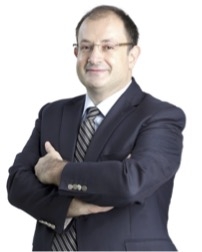
Plenary Speaker| Prof. Hilmi Volkan Demir,
Bilkent University Department of Electrical and Electronics Engineering, Department of Physics, UNAM– Institute of Materials Science and Nanotechnology, Ankara, Turkey
Hilmi Volkan Demir earned his PhD (2004) and MSc (2000) degrees in electrical engineering from Stanford University, CA, and his BSc (1998) degree in electrical and electronics engineering from Bilkent University. Presently, Dr. Demir is a professor at the Department of Electrical and Electronics Engineering and the Department of Physics at Bilkent University, his alma mater. Also, he serves as the Director of UNAM – The National Nanotechnology Research Center of Turkey. Under MoU with Bilkent, concurrently, Dr. Demir is a professor at the School of Electrical and Electronic Engineering, the School of Physical and Mathematical Sciences, and the School of Materials Science and Engineering at NTU Singapore – Nanyang Technological University. At NTU, he is the Founding Director of LUMINOUS! Centre of Excellence for Semiconductor Lighting and Displays. His current research interests include the science and technology of semiconductor lighting, nanocrystal optoelectronics and smart metastructured implants. Prof. Demir published over 350 peer-reviewed research articles in major scientific journals, 125 of which belong to Nature Index journals. He co-authored (together with S. Gaponenko) a textbook on Applied Nanophotonics published by Cambridge University Press (2018). He has delivered over 250 invited seminars, lectures and colloquia on the topics of colloidal nanophotonics, LED lighting and RF sensing in industry and academia around the globe. He is presently the Springer-Nature Series Editor of Nanoscience and Nanotechnology (2013-…) and is sitting on the ACS Photonics Editorial Board (2020-…) As a PI, Demir has contributed to commercialization and licensing of over 10 new enabling technologies, generating over 100 patent applications (granted and pending) as a principle inventor, and been involved in 4 spin-off companies along with his colleagues. These scientific and entrepreneurship activities resulted in several important awards including Nanyang Award for Research Excellence, NRF Investigatorship Award of Singapore, European Science Foundation EURYI Award, and TÜBİTAK Science Award. Dr. Demir is a Fellow of IEEE and a Fellow of OSA.
Title of talk: Emerging Semiconductor Nanocrystal Optoelectronics: from Colloidal Quantum Dots to Wells

Plenary Speaker| Prof. Alper Kiraz,
Department of Physics, Department of Electrical and Electronics Engineering Koç University, Turkey
Alper Kiraz received the B.S. degree in electrical and electronics engineering from Bilkent University, Turkey, in 1998, and M.S. and Ph.D. degrees in electrical and computer engineering from the University of California, Santa Barbara, USA, in 2000 and 2002, respectively. Between 2002 and 2004, he worked as a post-doctoral researcher at the Institute for Physical Chemistry in the Ludwig-Maximilians University, Munich, Germany. He joined Koç University in 2004 and became a full professor in 2014. Between 2014 and 2015 he was a visiting professor at the Biomedical Engineering Department of the University of Michigan, Ann Arbor. His current research interests include optofluidics, single molecule spectroscopy/microscopy, optical manipulation, and biomedical instrumentation. His research team pursues projects targeting the development of novel optofluidic lab-on-a-chip devices, molecular and gas sensors, optofluidic-based renewable energy solutions, and confocal microscope device concepts.
Title of talk: Deep Learning Enhanced Digital Microscopy and Bioimage Analysis
Plenary Speaker| Prof. Gerd Leuchs,
Max Planck Institute, Germany
Gerd is DLeuchs irector Emeritus at the Max Planck Institute for the Science of Light in Erlangen and an adjunct professor within the physics department of the University of Ottawa. After 15 years in academic research at the University of Cologne, the University of Munich and JILA in Boulder, Colorado, he worked at a Swiss optics company for five years before becoming a full professor at the University of Erlangen-Nürnberg. His scientific work includes quantum beats, photo-electron angular distributions in multiphoton ionization, quantum noise-reduced and entangled light beams and solitons in optical fibers and quantum communication protocols, focusing light beams and nanophotonics.
For five years, Gerd Leuchs led the German gravitational wave detection group (1985-1989). He has been a Visiting Fellow of JILA, Feodor-Lynen Fellow of the Alexander von Humboldt Foundation, Heisenberg Fellow of the German Science Foundation and Visiting Professor at the Australian National University, at the University of Adelaide and the Laboratoire Kastler Brossel of the Ecole Normale Supérieure. He is a member of the German Physical Society, the German Society for Applied Optics, the European Physical Society, and the German Academy of Sciences Leopoldina and a Fellow of the Institute of Physics, Optica and the American Association for the Advancement of Science. He is a foreign member of the Russian Academy of Sciences. He holds honorary degrees from the Danish Technical University and Saint Petersburg State University. Over the years, he has served on several OSA committees.
In 2005, he received the Quantum Electronics Prize from the European Physical Society, and in 2018, the Herbert Walther Prize jointly awarded by OSA and the German Physical Society (DPG). He won an advanced grant from the European Research Council, a megagrant from Russia, and a Julius-von-Haast Fellowship award from the Royal Society of New Zealand. With his research, Gerd Leuchs is contributing to the field of quantum technology. He is member of a number of advisory boards for quantum technology application and innovation in Germany and abroad.
Gerd Leuchs is Director Emeritus at the Max Planck Institute for the Science of Light in Erlangen and an adjunct professor within the physics department of the University of Ottawa. After 15 years in academic research at the University of Cologne, the University of Munich and JILA in Boulder, Colorado, he worked at a Swiss optics company for five years before becoming a full professor at the University of Erlangen-Nürnberg. His scientific work includes quantum beats, photo-electron angular distributions in multiphoton ionization, quantum noise-reduced and entangled light beams and solitons in optical fibers and quantum communication protocols, focusing light beams and nanophotonics.
For five years, Gerd Leuchs led the German gravitational wave detection group (1985-1989). He has been a Visiting Fellow of JILA, Feodor-Lynen Fellow of the Alexander von Humboldt Foundation, Heisenberg Fellow of the German Science Foundation and Visiting Professor at the Australian National University, at the University of Adelaide and the Laboratoire Kastler Brossel of the Ecole Normale Supérieure. He is a member of the German Physical Society, the German Society for Applied Optics, the European Physical Society, and the German Academy of Sciences Leopoldina and a Fellow of the Institute of Physics, Optica and the American Association for the Advancement of Science. He is a foreign member of the Russian Academy of Sciences. He holds honorary degrees from the Danish Technical University and Saint Petersburg State University. Over the years, he has served on several OSA committees.
In 2005, he received the Quantum Electronics Prize from the European Physical Society, and in 2018, the Herbert Walther Prize jointly awarded by OSA and the German Physical Society (DPG). He won an advanced grant from the European Research Council, a megagrant from Russia, and a Julius-von-Haast Fellowship award from the Royal Society of New Zealand. With his research, Gerd Leuchs is contributing to the field of quantum technology. He is member of a number of advisory boards for quantum technology application and innovation in Germany and abroad.
Title of talk: What are the limits to focusing light tightly
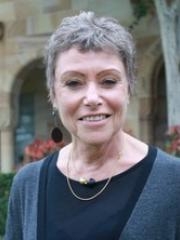
Plenary Speaker| Prof. Halina Rubinsztein-Dunlop,
Australian Institute for Bioengineering and Nanotechnology
Professor Halina Rubinsztein-Dunlop's research interests are in the fields of atom optics, laser micromanipulation, nano optics, quantum computing and biophotonics.
She has long standing experience with lasers, linear and nonlinear high-resolution spectroscopy, laser micromanipulation, and atom cooling and trapping. She was one of the originators of the widely used laser enhanced ionisation spectroscopy technique and is well known for her recent work in laser micromanipulation. She has been also working (Nanotechnology Laboratory, Göteborg, Sweden) in the field of nano- and microfabrication in order to produce the microstructures needed for optically driven micromachines and tips for the scanning force microscopy with optically trapped stylus. Recently she led the team that observed dynamical tunnelling in quantum chaotic system. Additionally Prof. Rubinsztein-Dunlop has led the new effort into development of new nano-structured quantum dots for quantum computing and other advanced device related applications.
Title of talk: Structured Light in Nano and Microsystems
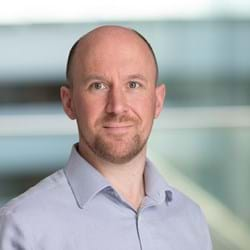
Department of Engineering Science, University of Oxford, UK.
He read for a degree in Engineering Science at Hertford College, Oxford, from 1993-7. His doctoral work in adaptive optics for confocal microscopy took place in the Department of Engineering Science at the University of Oxford from 1997-2001, during which time he was also a member of Jesus College. In 2001, Martin was elected to a Junior Research Fellowship at Christ Church and in 2003 was appointed a Royal Academy of Engineering/EPSRC Research Fellow. In 2007 he was awarded a five-year EPSRC Advanced Research Fellowship and was concurrently elected to a Hugh Price Fellowship at Jesus College. He became Professor of Engineering Science and Senior Research Fellow at Jesus College in 2014. He also holds a College Lecturership at Lincoln College. His current research interests centre on the development of new dynamic optical methods for applications ranging from biomedical imaging to laser-based manufacturing.
Awards: Young Researcher Award in Optical Technologies from the School of Advanced Optical Technologies at the University of Erlangen-Nürnberg, 2012.International Commission for Optics Prize, 2014.
Title of talk: Advances in adaptive optics for microscopy
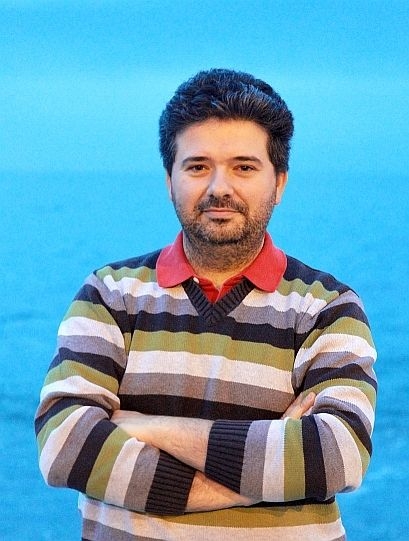
He received his undergraduate and graduate education at Bilkent University, Department of Physics. He worked on 'optical properties of low-dimensional systems and integrated optics' under the supervision of Prof. Atilla Aydınlı. He completed his PhD at the Max-Planck Institute for Solid State Research in Stuttgart under the supervision of Prof. Klaus Kern. During his doctoral work, he produced an 'apertureless scanning near-field microscope' with an optical resolution of 5 nm. He completed his post-doctoral studies at the Ludwig Maximillians University of Munich in the group of Prof. Jochen Feldman where he worked together with Prof. Thomas Klar on plasmonic systems. After working for a while as a scientist at the Center for Molecular Biomedicine in Trieste, Italy, he returned to Turkey as a faculty member at the Middle East Technical University Physics Department in early 2011. Since then, he leads the Nanooptics Research Laboratory where he continues his research on the light-matter interaction at nanoscale. He is also a lead researcher and consultant at ODTÜ-GÜNAM.
Title of talk: LIPSS for SERS: Metal Coated Direct Laser Written Periodic Nanostructures for Surface Enhanced Raman Spectroscopy
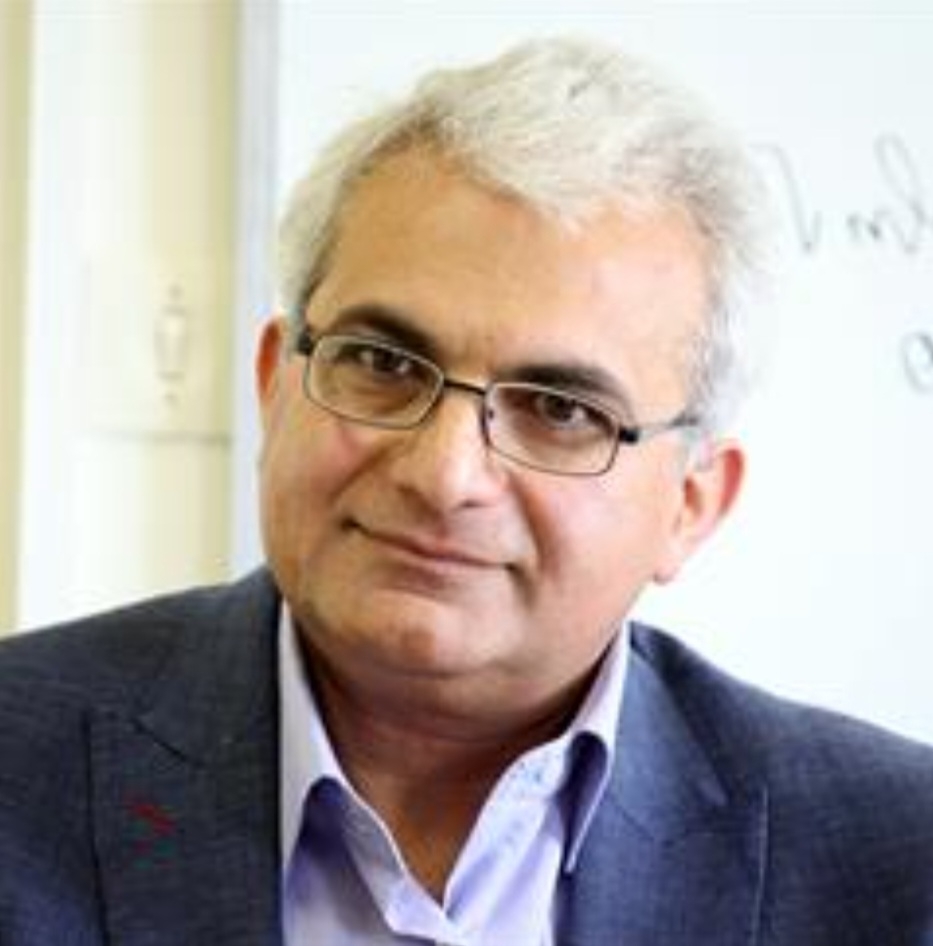
Department of Physics, Institute for Advanced Studies in Basic Sciences (IASBS), Zanjan, Iran
Hamid Khalesifard was born in Shiraz, Iran 1965, and received his Ph.D. in Physics from the Shiraz University in 1995. He is a Professor of Physics at the Institute for Advanced Studies in Basic Sciences and head of the Optics and Photonics Society of Iran. His research field of interest is passive and active optical remote sensing of atmospheric particles. He has more than 100 scientific publications and graduated with more than 40 Ph.D. and MSc students.
Title of talk: Optical remote sensing of atmospheric aerosols, a focus on the Iran Plateau
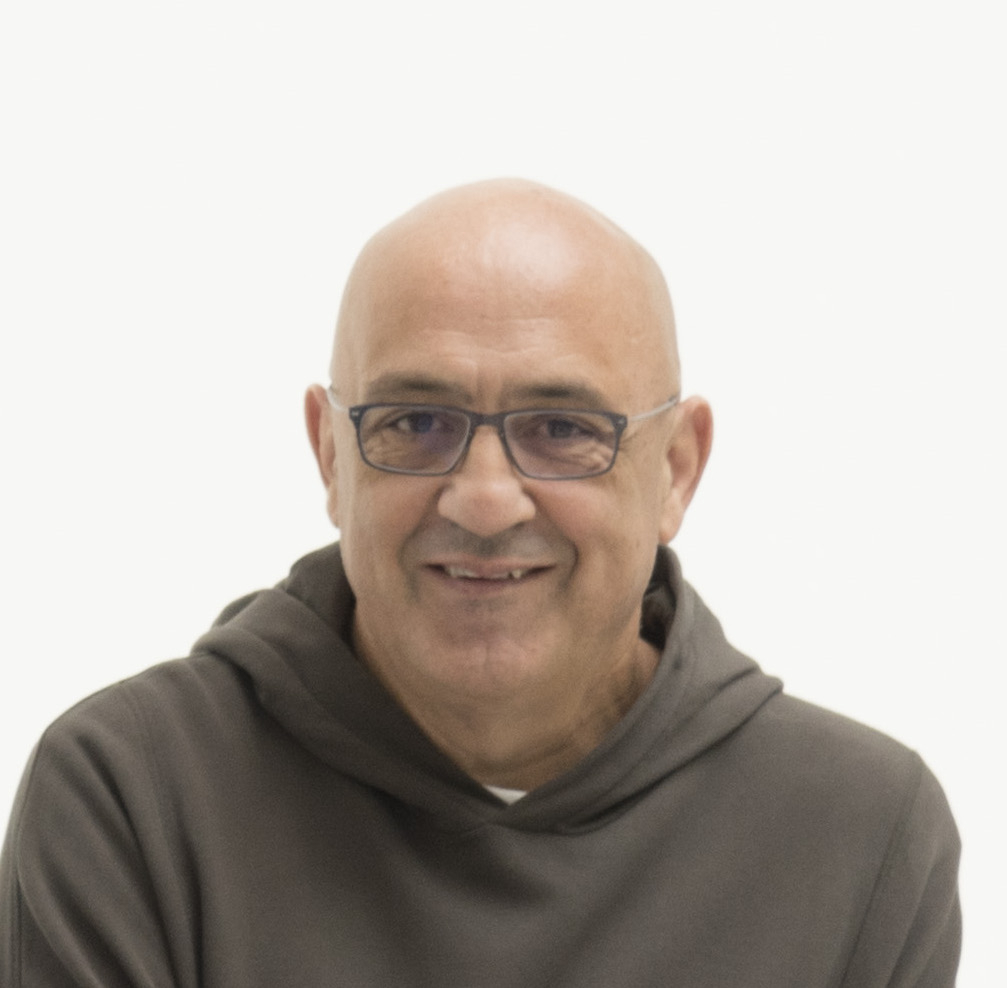
Universidad Complutense de Madrid
Luis L. Sánchez-Soto received his MSc in Physics (1984) and a PhD in Physics (1988) from the Complutense University of Madrid. He has been visiting researcher at numerous Universities. He has been a full professor of Quantum Optics in Madrid since 2002. In 2009, he joined the Max Planck Institute for the Science of Light, in Erlangen, where he led the theoretical group in the Division of Optics and Information, headed by Gerd Leuchs. His main research interests are quantum optics and quantum information.
Title of talk: Achieving the ultimate optical resolution
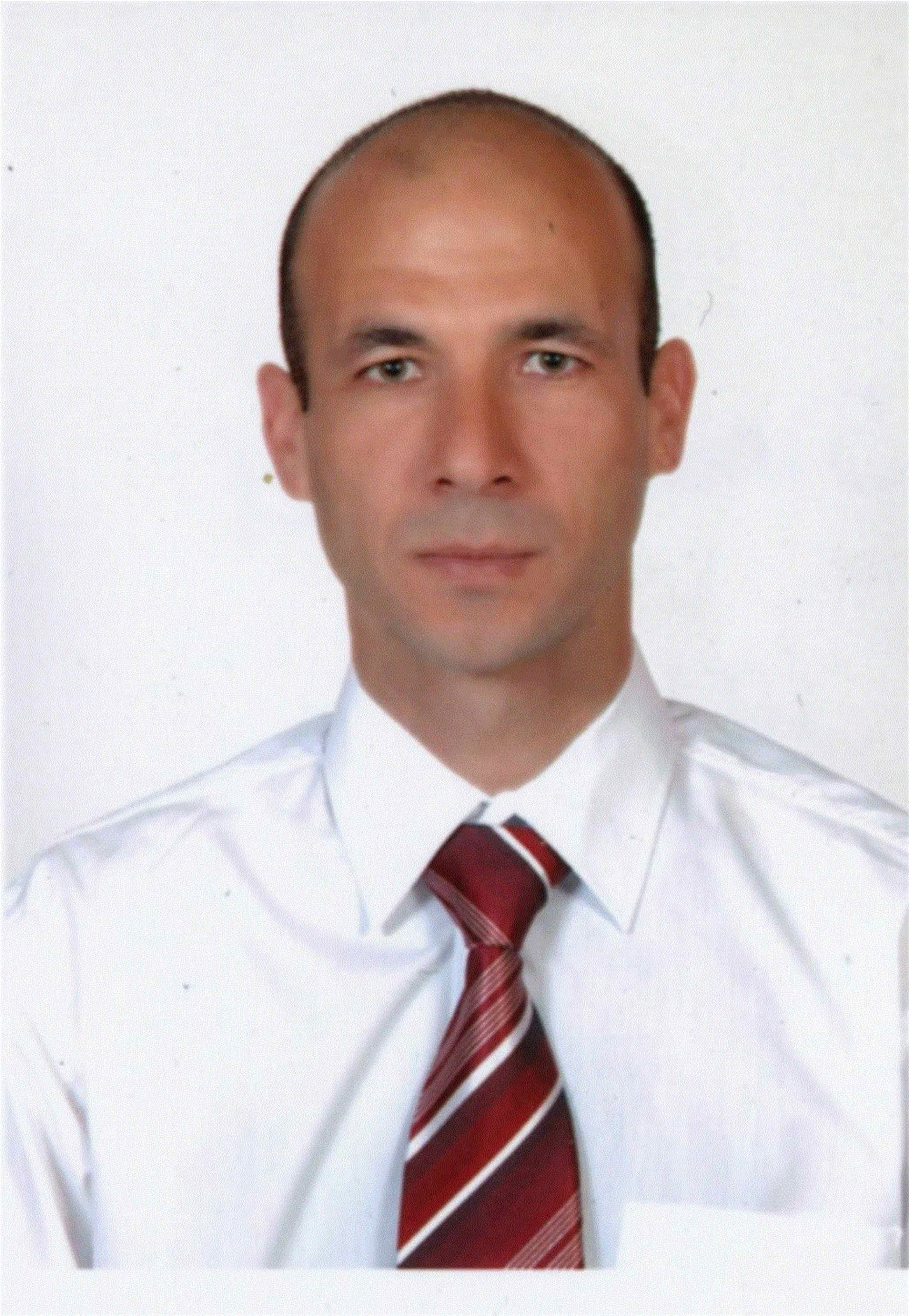
Department of Photonics, Izmir Institute of Technology, 35430 Izmir, Turkey
Sinan BALCI graduated from Department of Chemistry, Middle East Technical University in 2000 and received M.S. from Department of Chemistry, Bilkent University in 2002. He joined the research group of Prof. Klaus Kern at Max Planck Institute for Solid State Research, Germany and received his Ph.D. degree in 2006 from Physics Department, Swiss Federal Institute of Technology Lausanne (EPFL), Switzerland. He did his first postdoctoral research between 2006 and 2008 at University of California, Irvine (UCI) USA, Department of Electrical Engineering and Computer Science in the research group of Prof. Kumar Wickramasinghe. He did his second postdoctoral research between 2008-2012 at Bilkent University, Department of Physics under the supervisions of Prof. Dr. Atilla Aydinli and Prof. Dr. Coskun Kocabas. Between 2012 and 2017, he was an assistant proffesor at University of Turkish Aeronautical Association. In 2017, he joined the Department of Photonics at Izmir Institute of Technology as an Associate Professor and was promoted to Professor in 2022. The main goal of his research group is light-matter interaction at nanoscale dimension including plasmonics, excitonics, polaritons, colloidal nanoparticles, and 2D nanomaterials.
Title of talk: Colloidal Plexcitonic Nanoparticles
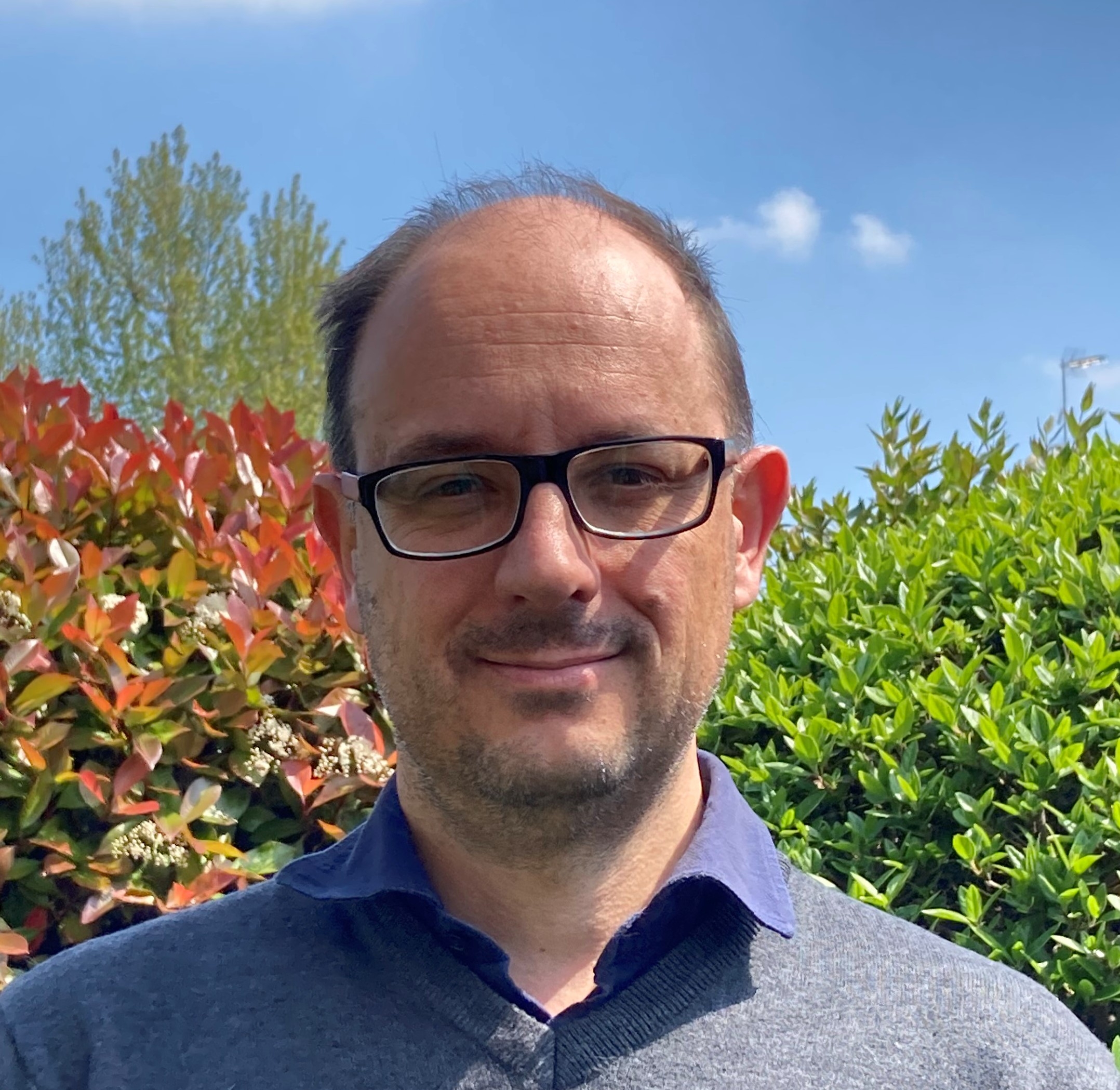
Dr. Luca Seravalli
IMEM-CNR Institute, Parma, Italy
Luca Seravalli is a permanent researcher at IMEM-CNR from 2009. He received a M.Sc. in physics at Trinity College of Dublin in 2000 and a PhD in physics at the University of Parma in 2003. He has authored 97 articles, with over 1000 citations and he has an h-index of 22.
From 2001 he has been working on epitaxial growth, optical characterization and modelization of semiconductor nanostructures for photonic and sensing applications. In particular he pioneered the design of InAs/InGaAs metamorphic Quantum Dots for extending the emission in the infrared C-band, allowing for the development of single and entangled photon emission in this telecom window. More recently, he has been working on the MOVPE growth of Ga2O3 and of Germanium nanostructures and on the CVD growth of 2-dimensional MoS2.
Title of talk: 2-dimensional MoS2 for photonic applications: CVD growth and properties
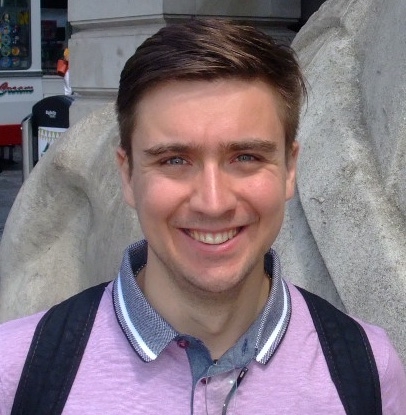
Dr. Zakhar Kudrynskyi
Research Fellow, The University of Nottingham, United Kingdom
Dr. Zakhar Kudrynskyi is currently a postdoctoral research fellow at The University of Nottingham (United Kingdom). He received his Ph.D. degree in Physics of Semiconductors and Dielectrics from the Institute for Problems of Materials Science of the National Academy of Sciences of Ukraine (Chernivtsi, Ukraine) in 2014. In 2015 he moved to the United Kingdom to continue his research on layered semiconductors at the University of Nottingham. His research interests include, but are not limited:
- the physics of 2D van der Waals materials and heterostructures: optical, electrical, thermal and magnetic phenomena at nanoscale;
- crystal growth and intercalation of novel van der Waals materials;
- thin-film ceramics as functional coatings: physical vapour deposition and material properties;
- micro-/nano-fabrication of devices for nano- and optoelectronics.
He has published >90 refereed journal papers, including highly cited articles in Nature Nanotechnology, Nature Materials, Advanced Materials, Physical Review Letters etc., leading to >2800 citations and h-index of 18 (April 2022). He has also given 6 invited talks at international scientific meetings and conferences.
Title of talk: 2D Indium Selenide: from physical phenomena to emerging technologies
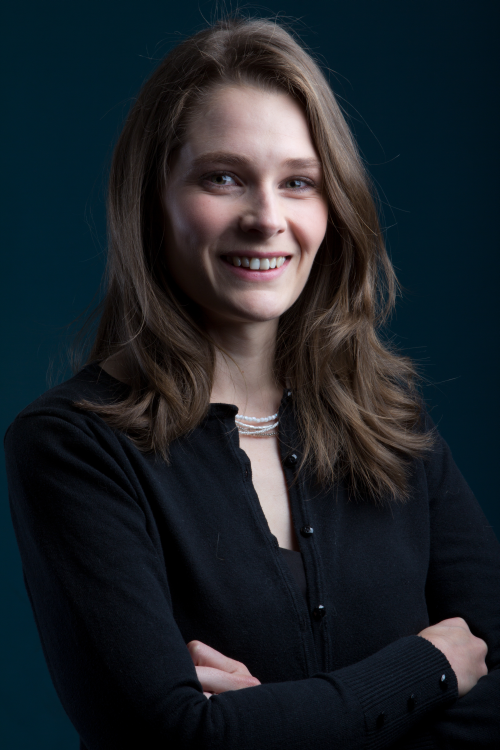
School of Physics, University of the Witwatersrand, Johannesburg, South Africa.
After receiving her MSc. in Physics from the University of KwaZulu-Natal, Angela joined the CSIR’s National Laser Centre on a Ph.D. studentship in 2008. Her Ph.D. research involved measurement techniques for optical fields carrying orbital angular momentum. She received her Ph.D. in 2012 and subsequently commenced a Postdoctoral Fellowship followed by a Senior Researcher position at the CSIR. After 10 years at the CSIR, Angela joined the University of the Witwatersrand where she is currently a Senior Lecturer in the Physics department and a research group member of the Structured Light Lab. Angela’s particular research interests lie in developing novel generation and diagnostic approaches for structured light over a range of powers and wavelength ranges. Her research has resulted in 35 peer-reviewed journal articles, more than 35 international conference proceedings and 1 international patent.
Title of talk: The generation and control of the structured polarisation
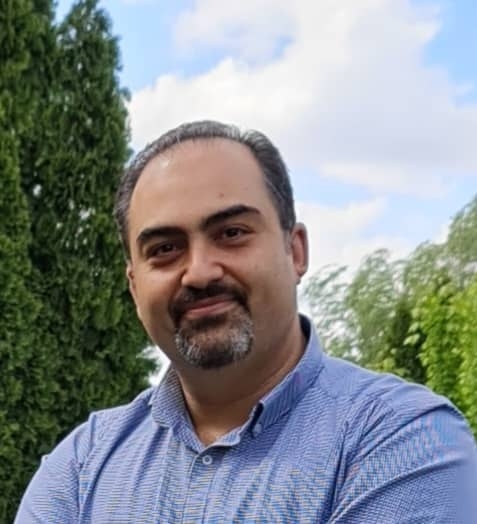
Department of Physics, Institute for Advanced Studies in Basic Sciences (IASBS), Zanjan, Iran
He studied solid-state physics from 1998 to 2003 at the Faculty of Physics, University of Tehran. He received his bachelor's and master's degrees in applied optics and optical measurement at Zanjan University and IASBS in 2006 and 2011, respectively. Since 2012, he has been working as an assistant professor at the Faculty of Physics of IASBS. His research interests include the development of new dynamic optical methods for 3D Imaging and Super-resolution in Optical Coherence Tomography and microscopic methods such as Digital Holography Microscopy and Confocal. He has graduated more than 30 postgraduate and doctoral students in this field. He is also looking for practical output from his research and is a founding member and board member of a knowledge-based company in the field of optical measuring devices.
Title of talk: Fresnel Diffraction from Phase Steps: Theory and Applications
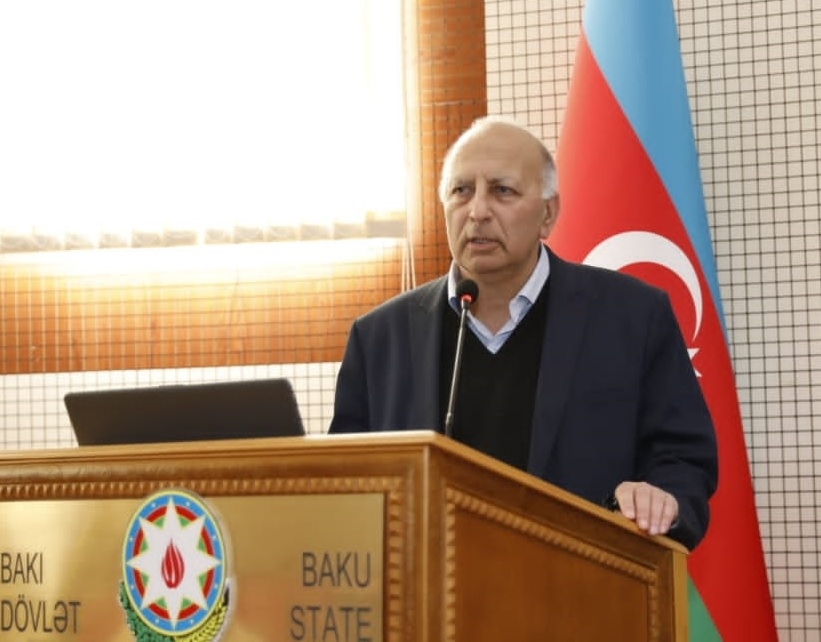
Prof. Mustafa Muradov,
Nano Research Center, Baku State University, Baku, Azerbaijan.
He is the head of a Nano Research Center at Baku State University. He graduated from Moscow Engineering Physics Institute (1981), and received his Doctor Degree in Physics & Mathematics. His academic and research interests are in the areas of nanomaterials, nanoelectronics, and material science. He has published over 100 papers in highly reputed journals and international conferences. He was a coordinator and participant in many European Commission and other international projects. His current research interests include optics, nanophotonics, nanomaterials growth technology, the influence of growth conditions, and technology to structure and optical properties of nanomaterials.
Title of talk: Nanowires on the base of Ag-Ag2S: Synthesis and Optical Properties
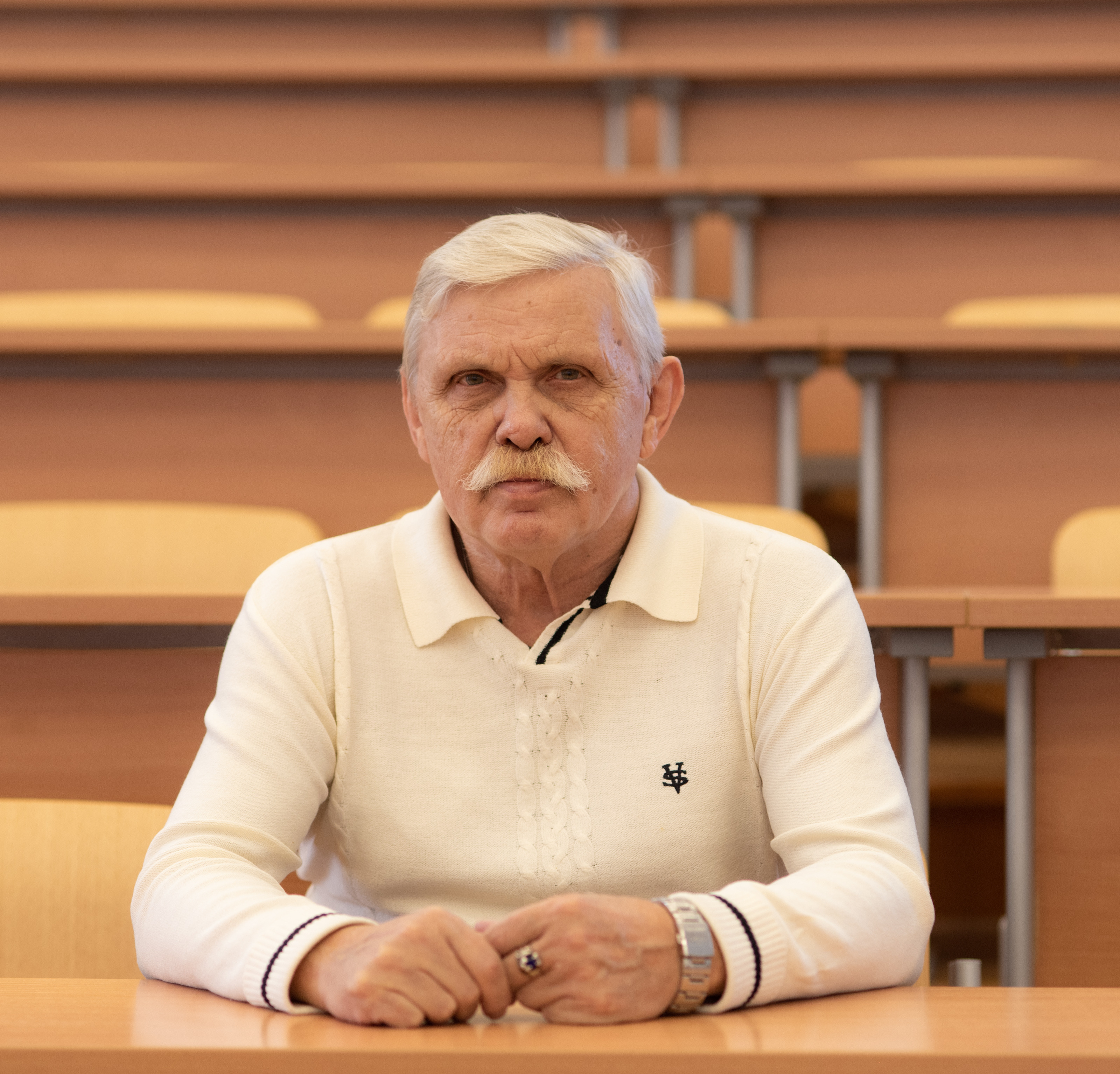
Prof. Alexandr Volyar,
Head of the General Physics Department in the Crimean Federal University named after V.I. Vernadsky.
Alexander Vladimirovich Volyar was given the degree of the Candidate of Technical Sciences in the field of physical and quantum electronics at the Moscow Institute of Radioelectronics in 1981; the degree of Doctor of the Physico-Mathematical Science in the field of optics and laser physics – at the Institute of Physics of the Academy of Science of Ukraine in 1992.
Since 1993, he works as a Professor of the Department of General Physics. Beginning in 1999 he is the Head of the Department of General Physics.
A.V Volyar is the author of more than 170 scientific articles in the sphere of nonlinear optics, fiber, and singular optics.
Title of talk: Structurally stable transitions in combined vortex beams upon excitation of each of its degrees of freedom
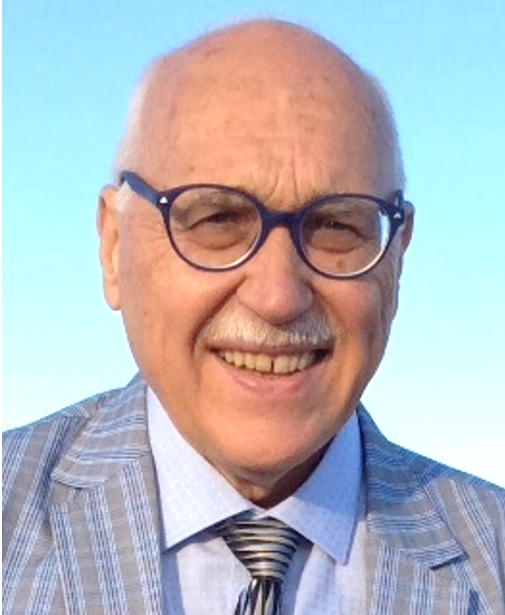
Prof. Valeri V. Tuchin,
Science Medical Center, Saratov State University, Saratov, Russia
Valery V. Tuchin is a corresponding member of the Russian Academy of Sciences, Head of the Department of Optics and Biophotonics, and Director of the Science Medical Center of the Saratov State University. He is also the Head of the Laboratory for Laser Diagnostics of Technical and Living Systems at the Institute of Precision Mechanics and Control of the RAS.
His research interests include tissue optics, laser medicine, tissue optical clearing, and nanobiophotonics. He is a Fellow of SPIE and OSA, was awarded the Honored Science Worker of the Russia, SPIE Educator Award, Joseph W. Goodman Book Writing Award (OSA/SPIE), and OSA Michael S. Feld Biophotonics Award; Medals of D.S. Rozhdestvensky and A. M. Prokhorov. He is the author of over 1000 articles, 30 monographs, and textbooks, has over 70 patents, and his works have been cited over 34,156 times.
Title of talk: Optical Clearing of Tissues for the Improvement of Laser Medical Technologies
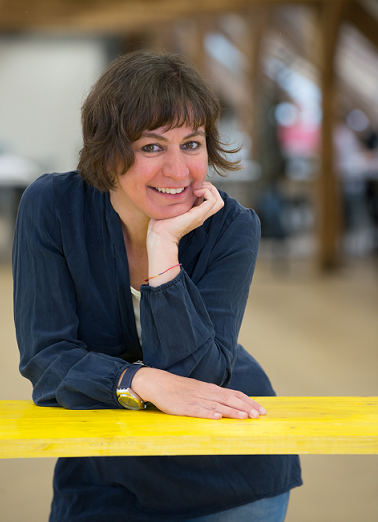
Prof. Benedetta Marmiroli,
Benedetta Marmiroli has a master in materials engineering obtained at the University of Modena and Reggio Emilia (Italy) and a PhD in industrial engineering obtained at University of Ferrara (Italy). She currently is senior scientist for the Institute of Inorganic Chemistry, of Graz University of Technology (Austria). She works at the Austrian SAXS beamline outstation at Elettra-Sinctrotrone Trieste synchrotron radiation source in Italy. She is also collaborating with Elettra in the management of the Deep X-ray lithography beamline. Her scientific interests involve the interdisciplinary combination of microfabrication and characterization techniques, for the construction of micro/nano fluidic devices based on advanced functional materials, and for the development of novel materials for applications in chemistry and biology. She is Associate Editor for the specialty Nanofabrication of Frontiers in Nanotechnology. She has published more than 60 articles in SCI journals. She has presented over 30 orals or posters at conferences.
Title of talk: X-ray radiation assisted nanomaterials patterning by Deep X-ray lithography and investigation by Small Ange X-ray Scattering
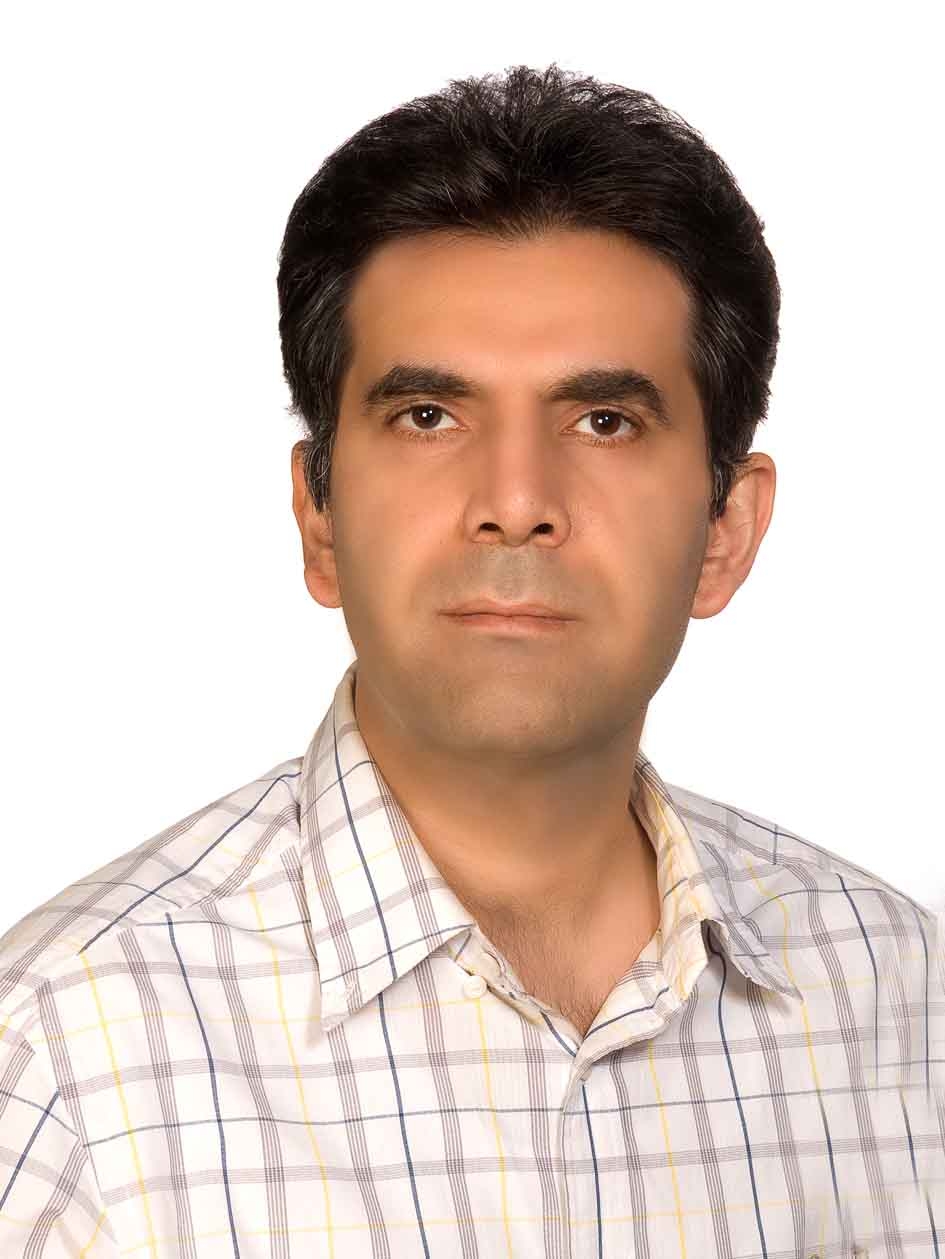
Department of Physics, University of Tehran, Iran
Academic Degrees
2001 Ph.D. Condensed Matter Physics, Université Louis Pasteur, Strasbourg, France, and Institute for Advanced Studies in
Basic Sciences, Zanjan, Iran.
1997 M.Sc. Condensed Matter Physics, Institute for Advanced Studies in Basic Sciences, Zanjan, Iran.
1995 B.Sc. Electronics Engineering, Tehran University
Research Interests
Interaction of light and matter (nanoparticles, quantum dots, quantum rings, graphene, topological
insulators, and hybrid systems).
Publications (68 articles)
Ph.D. Students (10)
M. Sc. Students (43)
Courses taught (22 )
Title of talk: Mie scattering: Optical signature of magnetoelectric polarizability of topological insulators

Erzurum Technical University
Dr. Turgut is Assoc. Professor at the Department of Basic Sciences, Science Faculty, Erzurum Technical University, Turkey. He received his PhD from Ataturk University, Turkey and he completed his postdoctoral studies at Arizona State University, USA. His major research interests are two-dimensional materials, thin films, photonic materials and devices. He has published more than 70 research papers and his works have been cited more than 2000.
Title of talk: Optimizing CVD Growth Parameters of InSe Monolayers
